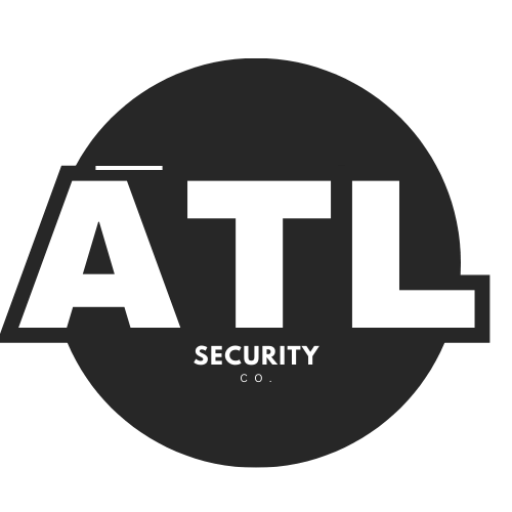Artificial Intelligence, or AI, is changing many parts of our lives, and surveillance is no exception. AI-powered surveillance uses smart technology to watch over places and people. It can analyze video feeds, detect unusual behavior, and even recognize faces.
This technology is becoming more common in businesses, schools, and public spaces. With the rise of AI, security systems are getting smarter and more efficient. Imagine a security camera that not only records but also understands what it sees.
This is what AI can do. It helps security teams respond faster to potential threats. Instead of just watching hours of footage, AI can highlight important moments.
This makes it easier for businesses to keep their properties safe.
As we dive deeper into this topic, we will explore the benefits, challenges, and future of AI-powered surveillance.
Key Takeaways
- AI-powered surveillance uses advanced technology to enhance security measures
- Businesses can benefit from AI-powered surveillance through improved threat detection and response
- AI-powered surveillance is revolutionizing security by providing real-time monitoring and analysis
- Machine learning plays a crucial role in AI-powered surveillance by enabling pattern recognition and predictive analytics
- Ethical considerations and privacy concerns must be carefully addressed when implementing AI-powered surveillance in business security systems
The Benefits of AI-Powered Surveillance for Business Security
AI-powered surveillance offers many benefits for businesses. First, it enhances security by providing real-time alerts. If something unusual happens, like a person entering a restricted area, the system can notify security staff immediately.
This quick response can prevent theft or other crimes before they escalate. Businesses can feel more secure knowing they have an extra layer of protection. Another benefit is cost savings.
Traditional security systems often require many staff members to monitor feeds and respond to incidents. With AI, businesses can reduce the number of people needed for surveillance. The technology can handle much of the monitoring on its own.
This means companies can save money on labor costs while still maintaining a high level of security.
How AI-Powered Surveillance is Changing the Landscape of Security

AI-powered surveillance is changing how we think about security. In the past, security was mostly about having cameras and guards. Now, it’s about using technology to make those systems smarter.
AI can analyze patterns in behavior and predict potential threats. This proactive approach is a game-changer for many businesses. Moreover, AI can help improve customer experiences.
For example, in retail stores, AI can track customer movements and preferences. This information can help businesses understand what products are popular and where customers spend their time. By combining security with customer insights, businesses can create a safer and more enjoyable shopping experience.
The Role of Machine Learning in AI-Powered Surveillance
Machine learning is a key part of AI-powered surveillance. It allows systems to learn from data over time. For instance, if a camera sees a person acting suspiciously multiple times, it can recognize that behavior in the future.
This means the system gets better at identifying threats as it gathers more information. Machine learning also helps reduce false alarms. Traditional systems might alert security for every little movement, which can be annoying and lead to complacency.
With machine learning, the system can differentiate between normal activity and potential threats. This means security teams can focus on real issues rather than wasting time on false alarms.
Ethical Considerations and Privacy Concerns with AI-Powered Surveillance
While AI-powered surveillance has many benefits, it also raises important ethical questions. One major concern is privacy. People often worry about being watched all the time.
They want to feel safe but also want their personal space respected. Businesses must find a balance between security and privacy. Another issue is data security.
AI systems collect a lot of information, which can be sensitive. If this data falls into the wrong hands, it could lead to serious problems for individuals and businesses alike. Companies need to ensure they have strong protections in place to keep this data safe from hackers and misuse.
Implementing AI-Powered Surveillance in Business Security Systems

Implementing AI-powered surveillance isn’t just about buying new cameras; it requires careful planning. First, businesses need to assess their specific security needs. What are the main risks they face?
Understanding these risks will help them choose the right technology. Next, training staff is crucial. Employees need to know how to use the new systems effectively.
They should understand how to respond to alerts and interpret the data provided by AI tools. Without proper training, even the best technology won’t be effective.
Case Studies: Successful Integration of AI-Powered Surveillance in Business Security
Many businesses have successfully integrated AI-powered surveillance into their security systems. For example, a large retail chain used AI cameras to monitor customer behavior in stores. They found that certain areas had higher theft rates than others.
By adjusting their layout and increasing staff presence in those areas, they reduced theft significantly. Another case involved a bank that implemented AI surveillance to monitor transactions at ATMs. The system could detect unusual patterns, such as someone loitering near an ATM for too long.
This allowed security teams to intervene quickly and prevent potential crimes before they happened.
The Future of AI-Powered Surveillance in Business Security
Looking ahead, the future of AI-powered surveillance seems bright. As technology continues to advance, we can expect even smarter systems that offer better protection for businesses. For instance, future systems may use advanced facial recognition that respects privacy while still identifying potential threats.
Moreover, as more businesses adopt this technology, we may see new regulations emerge to protect privacy rights. Balancing security needs with individual rights will be crucial as we move forward. Overall, AI-powered surveillance will likely become a standard part of business security strategies in the years to come.
In conclusion, AI-powered surveillance is transforming how businesses approach security. With its ability to enhance safety, reduce costs, and provide valuable insights, it’s clear why so many companies are adopting this technology. However, as we embrace these advancements, we must also remain mindful of ethical considerations and privacy concerns.
By doing so, we can create a safer environment for everyone while respecting individual rights.
FAQs
What is AI-powered surveillance?
AI-powered surveillance refers to the use of artificial intelligence technology to enhance the capabilities of traditional surveillance systems. This includes the use of machine learning algorithms to analyze video footage, detect anomalies, and automate security processes.
How is AI-powered surveillance transforming business security?
AI-powered surveillance is transforming business security by providing more advanced and efficient monitoring and threat detection capabilities. It can analyze large amounts of data in real-time, identify potential security risks, and alert security personnel to take action.
What are the benefits of AI-powered surveillance for businesses?
The benefits of AI-powered surveillance for businesses include improved threat detection, reduced false alarms, increased operational efficiency, and enhanced overall security. It also allows for proactive security measures and can help businesses save on security costs in the long run.
What are some potential concerns with AI-powered surveillance?
Some potential concerns with AI-powered surveillance include privacy issues, potential misuse of the technology, and the need for clear regulations and guidelines to ensure ethical and responsible use. There are also concerns about the potential for bias in AI algorithms and the impact on individual freedoms.





